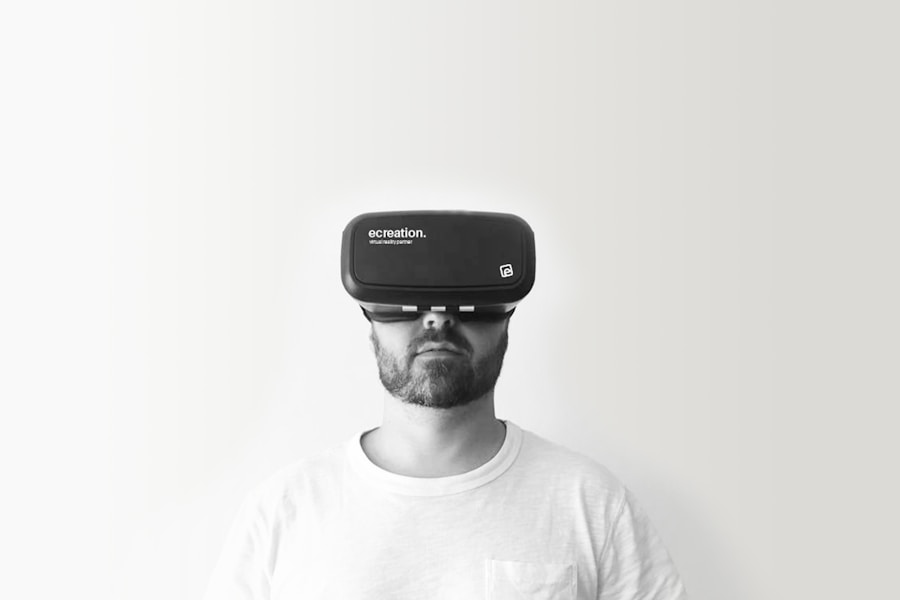Download links
How to install Exploring the Virtual Life: An Immersive Experience APK?
1. Tap the downloaded Exploring the Virtual Life: An Immersive Experience APK file.
2. Touch install.
3. Follow the steps on the screen.
Description
The concept of virtual reality (VR) has evolved significantly since its inception, tracing back to the mid-20th century when pioneers began to explore the potential of immersive experiences. One of the earliest examples can be found in the 1960s with the invention of the Sensorama, a multi-sensory machine created by Morton Heilig. This device aimed to provide users with a simulated experience that combined 3D visuals, sound, vibrations, and even smells.
Although it was a rudimentary attempt at creating an immersive environment, it laid the groundwork for future developments in VR technology. As the decades progressed, advancements in computer graphics and display technology propelled the VR movement forward. In the 1980s, Jaron Lanier, a computer scientist and artist, popularized the term “virtual reality” and founded VPL Research, which developed some of the first VR products, including data gloves and head-mounted displays.
These innovations captured the imagination of both the public and industry leaders, leading to increased investment in VR research and development.
The turn of the millennium saw a resurgence of interest in virtual reality, driven by advancements in technology and a growing understanding of its potential applications.
The introduction of affordable consumer-grade VR headsets, such as the Oculus Rift in 2012, marked a pivotal moment in the history of virtual reality.
The subsequent release of other headsets, such as HTC Vive and PlayStation VR, further solidified VR’s place in mainstream culture, leading to an explosion of content creation across various industries.
Key Takeaways
- Virtual reality has a long history, dating back to the 1950s, and has evolved significantly over the years.
- Tools and technology such as headsets, controllers, and haptic feedback systems are essential for navigating the virtual world.
- Immersion in virtual reality can have psychological effects, including presence, embodiment, and emotional responses.
- Virtual communities provide opportunities for people to connect, collaborate, and socialize in the digital realm.
- Virtual reality has the potential to revolutionize education and training by providing immersive and interactive learning experiences.
Navigating the Virtual World: Tools and Technology
The tools and technology that underpin virtual reality are diverse and continually evolving, reflecting the rapid pace of innovation in this field. At its core, VR relies on hardware components such as head-mounted displays (HMDs), motion tracking systems, and input devices to create an immersive experience. HMDs are perhaps the most recognizable aspect of VR technology; they encompass a range of devices that envelop the user’s field of vision with digital content.
Modern HMDs often feature high-resolution displays, wide fields of view, and advanced optics to enhance visual fidelity. Motion tracking is another critical component that contributes to the immersive nature of virtual reality. Systems such as external sensors or built-in accelerometers and gyroscopes allow for real-time tracking of a user’s head movements and body position.
This tracking capability enables users to look around and interact with their virtual environment naturally. For instance, the Oculus Quest utilizes inside-out tracking technology that eliminates the need for external sensors, making it more accessible for casual users. Input devices play a vital role in facilitating interaction within virtual environments.
Controllers equipped with motion sensors allow users to manipulate objects and navigate through digital spaces intuitively. Additionally, advancements in haptic feedback technology have introduced tactile sensations that enhance immersion by simulating physical interactions. For example, haptic gloves can provide users with a sense of touch when they grasp virtual objects, creating a more convincing experience.
As VR technology continues to advance, software development has also become increasingly sophisticated. Game engines like Unity and Unreal Engine have emerged as powerful tools for creating immersive experiences, enabling developers to design intricate virtual worlds with realistic physics and interactive elements. These platforms support a wide range of applications beyond gaming, including simulations for training purposes, architectural visualization, and therapeutic interventions.
The Psychology of Immersion: Understanding the Virtual Experience

The psychological aspects of immersion in virtual reality are complex and multifaceted. Immersion refers to the sensation of being enveloped by a virtual environment to the extent that users feel present within it. This phenomenon is influenced by various factors, including sensory input, user agency, and emotional engagement.
Virtual Communities: Building Connections in the Digital Realm
| Metrics | Statistics |
|---|---|
| Number of Virtual Communities | Over 1.5 billion |
| Active Social Media Users | Over 3.6 billion |
| Percentage of Internet Users Engaged in Virtual Communities | Around 70% |
| Top Virtual Community Platforms | Facebook, Instagram, Twitter, LinkedIn, Reddit |
| Engagement Rate in Virtual Communities | Varies by platform, but averages around 3% |
Virtual reality has not only transformed individual experiences but has also fostered the creation of vibrant communities within digital spaces. These communities often transcend geographical boundaries, allowing individuals from diverse backgrounds to connect over shared interests or experiences. Social VR platforms like VRChat and AltspaceVR have emerged as popular venues for users to interact with one another in immersive environments.
In these virtual spaces, users can create avatars that represent them, enabling self-expression and identity exploration. The ability to customize avatars allows individuals to present themselves in ways that may differ from their real-world identities, fostering an inclusive atmosphere where people can engage without societal constraints. This aspect is particularly appealing for those who may feel marginalized or disconnected in their physical lives; VR provides an opportunity for them to find belonging within like-minded communities.
Interactions within these virtual communities can take many forms—ranging from casual conversations to organized events such as concerts or art exhibitions. The immersive nature of VR enhances social interactions by allowing users to communicate through gestures and body language, which are often lost in traditional online communication methods. This heightened sense of presence can lead to more meaningful connections between individuals who may never have met otherwise.
Moreover, virtual communities have proven instrumental during times of social isolation, such as during the COVID-19 pandemic. As physical gatherings became restricted, many turned to VR platforms as alternatives for socializing and maintaining connections with friends and family. Events like virtual meetups or game nights provided opportunities for people to come together despite physical distance, highlighting how VR can serve as a lifeline for social interaction in challenging times.
The Impact of Virtual Reality on Education and Training
The application of virtual reality in education and training has gained significant traction over recent years due to its ability to create engaging learning experiences. By immersing students in interactive environments, educators can enhance understanding and retention of complex concepts across various subjects. For instance, medical students can practice surgical procedures in simulated operating rooms without any risk to patients; this hands-on experience allows them to hone their skills before entering real-world scenarios.
In addition to medical training, VR has found applications in fields such as engineering, architecture, and history education. Engineering students can explore intricate designs through 3D modeling software while experiencing how their creations function in real-time simulations. Architecture students can walk through their designs before construction begins, allowing them to identify potential issues early on.
History classes can transport students back in time through immersive experiences that recreate historical events or environments—making learning more engaging than traditional textbooks ever could. Furthermore, VR’s potential extends beyond higher education into K-12 settings. Schools are beginning to adopt VR technology as a means of enhancing curriculum delivery and fostering creativity among students.
For example, students studying biology can explore the human body at a cellular level or observe ecosystems up close without leaving their classrooms. Such experiences not only captivate students’ attention but also cater to different learning styles by providing visual and experiential learning opportunities. However, integrating VR into educational settings does come with challenges.
The cost of equipment and software can be prohibitive for some institutions, particularly those with limited budgets. Additionally, educators must be trained on how best to utilize this technology effectively within their teaching practices. Despite these hurdles, the potential benefits of VR in education are undeniable; it offers innovative ways to engage learners while preparing them for future careers in an increasingly digital world.
Ethical Considerations in the Virtual World: Balancing Realities

As virtual reality continues to permeate various aspects of society—from entertainment to education—ethical considerations surrounding its use have become increasingly important. One major concern is the potential for addiction or escapism; individuals may become so engrossed in virtual experiences that they neglect their real-world responsibilities or relationships. This phenomenon raises questions about how much time is appropriate for users to spend immersed in virtual environments without negatively impacting their lives outside of VR.
Another ethical consideration involves privacy and data security within virtual spaces. Many social VR platforms collect user data to enhance personalization or improve user experiences; however, this data collection raises concerns about how information is stored and used by companies. Users may unknowingly share sensitive information while interacting with others or participating in activities within these environments—leading to potential breaches of privacy if proper safeguards are not implemented.
Moreover, issues related to representation and inclusivity must be addressed as well. As diverse communities form within virtual spaces, it is crucial that developers create environments that reflect this diversity rather than perpetuating stereotypes or exclusionary practices. Ensuring equitable access to VR technology is also essential; marginalized groups may face barriers that prevent them from fully participating in these digital realms.
Finally, there is an ongoing debate about the implications of creating hyper-realistic simulations that blur the line between reality and fantasy. While such experiences can be beneficial for training or therapeutic purposes, they also raise ethical questions about consent and psychological impact—particularly when it comes to sensitive topics like violence or trauma. Striking a balance between innovation and ethical responsibility will be vital as society navigates the complexities introduced by virtual reality technologies moving forward.
If you’re interested in exploring the world of digital creativity, you may want to check out PicsArt Photo Studio Collage. This app allows users to edit photos, create collages, and add unique effects to their images. It’s a great tool for those looking to enhance their virtual life through visual storytelling. For more information on how to use this app effectively, you can read the article here.
FAQs
What is virtual life?
Virtual life refers to the experience of living and interacting in a digital or virtual environment, often through the use of technology such as virtual reality, augmented reality, or online platforms.
What are some examples of virtual life?
Examples of virtual life include virtual reality games and simulations, social media platforms, online communities, and virtual worlds such as Second Life and The Sims.
How does virtual life differ from real life?
Virtual life differs from real life in that it takes place in a digital or simulated environment, and the interactions and experiences are mediated by technology. While virtual life can offer a sense of escapism and creativity, it may not always accurately reflect the complexities and nuances of real life.
What are the benefits of virtual life?
Some potential benefits of virtual life include opportunities for creativity and self-expression, the ability to connect with others from around the world, and the potential for immersive and engaging experiences.
What are the potential drawbacks of virtual life?
Drawbacks of virtual life may include issues related to privacy and security, the potential for addiction or over-reliance on technology, and the risk of disconnecting from real-life relationships and experiences.
How is virtual life impacting society?
Virtual life is impacting society in various ways, including influencing how people socialize, work, and entertain themselves. It has also raised questions about the boundaries between the digital and physical worlds, and the implications for mental health and well-being.





